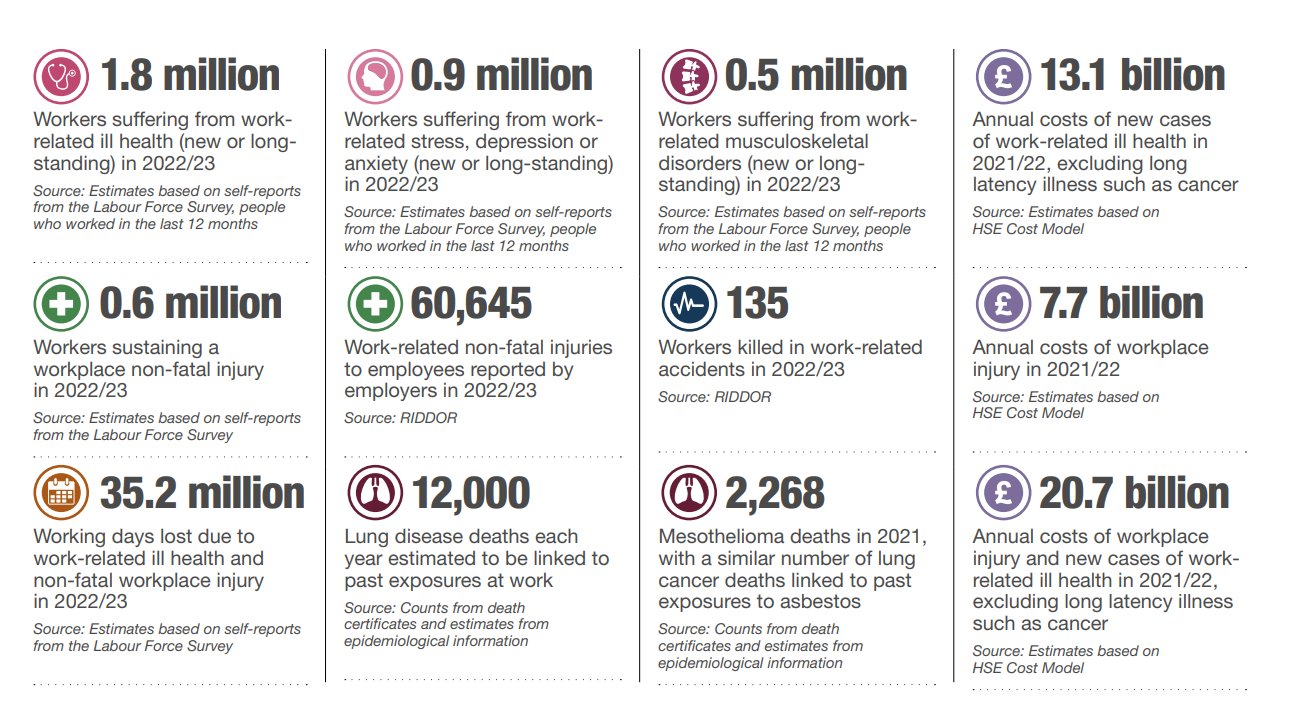
Record number of people on long-term sick leave
The Society of Occupational Medicine (SOM) has released the first in-depth study into the impact of ill health on the UK’s working population, Understanding Recent Trends in Ill Health-Driven Fallout from the UK Job Market.
Launched following Occupational Health Awareness Week (18-24 September), the report analyses data trends - providing a comprehensive picture of the current health challenges experienced by the UK workforce.
Key findings include:
- Long-term sickness in women across all age groups has been rising since 2014, with women becoming economically inactive at a higher rate than men.
- An increase in economic inactivity in young men aged 16 to 24, with sharp increases in mental health issues.
- Occupations with less ability to work from home are more likely to see people leave the workforce due to long-term sickness.
- Pressures in health and social care delivery, including the impact of COVID-19, has led to backlogs for treatment and worsening health outcomes.
- The UK has an ageing population, high rates of excess weight, and alcohol consumption and a legacy of smoking, resulting in long-term physical and mental health problems.
Of the 41.6 million people in the UK of working age (age 16-64), 2.5 million (one in 16 people) are inactive due to long-term sickness. The historically high number of people off work, long-term sick, remains an immediate and pressing concern for the government. More than 11 million people are living with long-term conditions that can affect their ability to work.
Of the four million people living with mental health conditions, only two million are employed. Nearly 60% of people who are economically inactive and left work in the last two to three years have a work-limiting health condition.
The analysis demonstrates how occupation, gender and disability affects getting back to work. SOM believes occupational health (OH) provision is a key solution to this issue. SOM is calling for comprehensive OH coverage, with only 50% of workers currently accessing OH.
Government steps have been taken, including in the Spring Budget, to support OH so those with health conditions can continue to work, but more must be done to keep people healthy at work and reverse these trends. New government consultations on OH and tax incentives on occupational health (OH) are welcomed and are currently open.
SOM hopes that publishing this data will support policy conversations to achieve universal OH coverage.
SOM CEO Nick Pahl said:
“The historically high number of people off work long-term sick remains an immediate and pressing concern for the government. Without investment in occupational health, these figures will continue to get worse. This report helps us better understand the patterns and causes of ill-health driven fallout from the UK job market. It’s vital that we understand why the UK is seeing a rise in inactivity rates compared to other OECD countries. We need to understand what the catalysts are, the drivers of fallout, and what factors contribute to preventing people return to work.”
Download the full report here.
IOSH Managing Occupational Health and Wellbeing, brought to you by International Workplace, is suitable for managers and supervisors working in any sector and for any organisation. It's designed to provide them with the tools and techniques to improve health and wellbeing in the organisation. More information can be found here.







